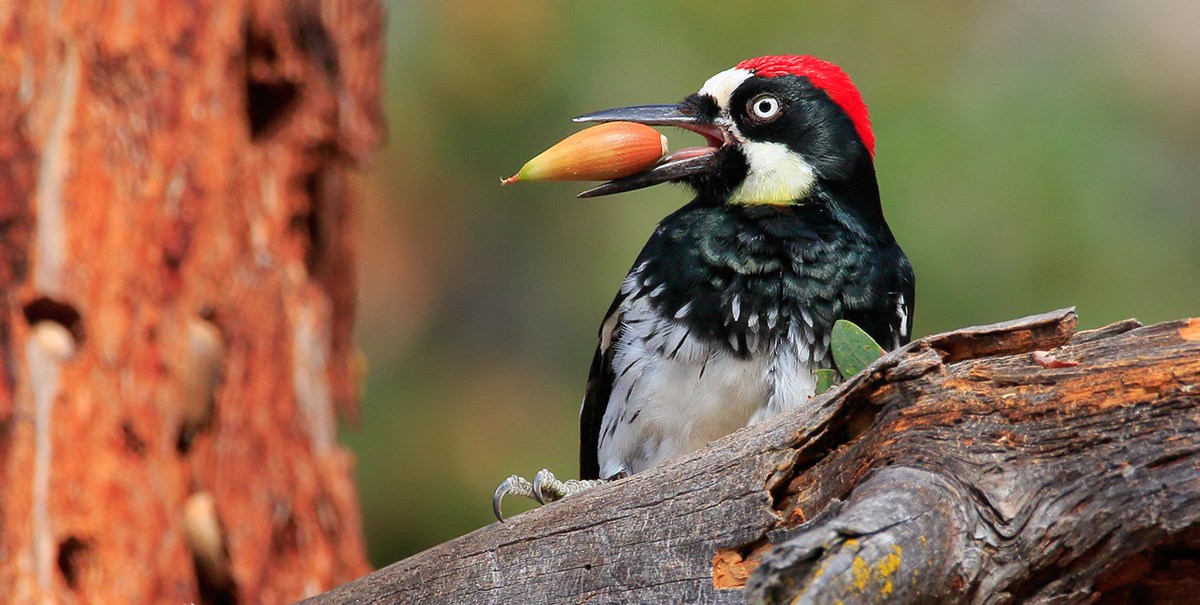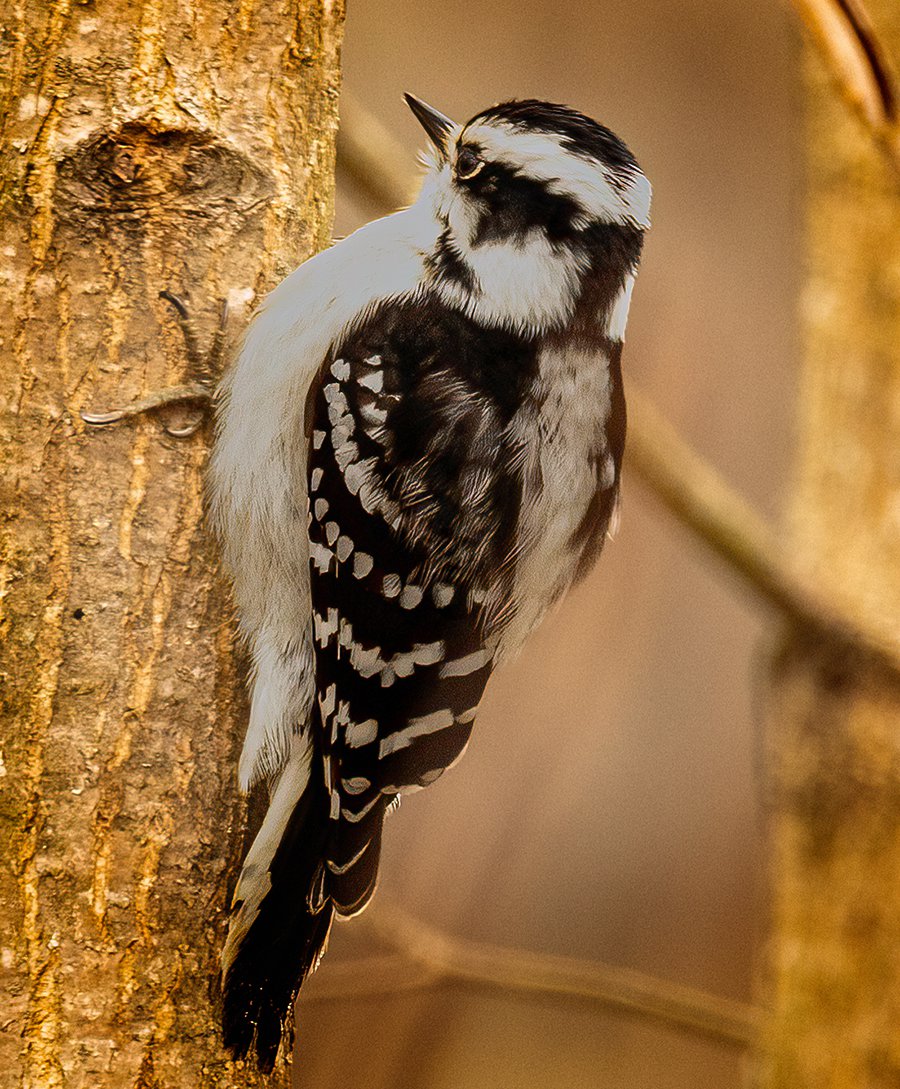Woodpeckers: A Comprehensive Overview to Understanding These Distinct Birds
Woodpeckers, with their distinct habits and physical qualities, have long astounded the interest of ornithologists and nature fanatics alike. As we explore the complex composition, diverse types, and environmental relevance of woodpeckers, a deeper recognition for these special birds and the mysteries they hold unravels.

Woodpeckers' Drumming Behavior
Woodpeckers exhibit a rhythmic and specific drumming behavior that serves various important features in their day-to-days live. This behavior is primarily related to interaction, region protection, and foraging. The unique drumming audio is created by the quick pecking of their beaks against tough surface areas such as tree trunks, branches, or even metal things.
Interaction is an important aspect of woodpecker behavior, and drumming plays a considerable duty in this procedure. Woodpeckers utilize drumming to establish their visibility, draw in mates, and maintain call with their partners and spawn. The frequency, intensity, and duration of drumming sequences convey particular messages to other woodpeckers in the location.
Along with communication, woodpeckers use drumming habits for region protection. Woodpeckers in Florida. The loud and recurring drumming offers as a warning to potential burglars, indicating that the location is already declared. By establishing their area via drumming, woodpeckers decrease the chance of problems over beneficial resources such as food and nesting websites
Additionally, woodpeckers additionally employ drumming as a foraging strategy. The rhythmic pecking aids them locate bugs hiding beneath the bark of trees by creating resonances that interfere with the victim's camouflage. This actions showcases the flexibility and resourcefulness of woodpeckers in using their drumming abilities for multiple vital functions.
Distinct Adjustments for Tree Climbing
Having mastered the art of drumming to connect, safeguard territory, and forage, woodpeckers have actually evolved distinct adjustments that promote their impressive climbing capacities in their arboreal environments. One key adjustment is their specialized feet. Woodpeckers have zygodactyl feet, with two toes pointing forward and 2 toes aiming backwards. This plan offers a solid grasp on the vertical surface areas of trees, permitting them to stick easily while foraging for insects or drumming. In addition, woodpeckers possess rigid tail plumes that function as a prop to support their bodies as they climb up. These tail plumes provide stability and balance, enabling woodpeckers to navigate up tree trunks with accuracy and agility.
Additionally, woodpeckers have powerful neck muscular tissues and an one-of-a-kind head framework that aid in their climbing up capabilities. Their solid neck muscle mass permit them to quickly eat tree bark without experiencing whiplash, while their thick head and tiny brain act as shock absorbers, protecting them from the effect of duplicated drumming. These adaptations collectively enable woodpeckers to navigate the vertical globe of trees with efficiency and poise.

Role of Woodpeckers in Ecological Communities
Playing a pivotal role in forest communities, woodpeckers add substantially to the equilibrium and health of their habitats through their distinct habits and communications with other Your Domain Name varieties. Among the essential eco-friendly functions of woodpeckers is their duty in regulating insect populaces. By foraging for insects under the bark of trees, woodpeckers help manage insect populaces, protecting against episodes that can damage the general wellness of the forest. Additionally, woodpeckers produce dental caries in trees that work as critical nesting sites for a selection of other bird species, advertising biodiversity within the ecosystem.
Additionally, the drumming and articulations of woodpeckers play a vital function in communication and region establishment. These noises not just offer to attract friends however likewise assist specify borders in between various woodpecker areas, lowering problems and advertising an unified conjunction within the woodland community. In general, the existence of woodpeckers in forest communities highlights their importance as keystone my response varieties, affecting the dynamics and operating of these habitats in diverse methods.
Makeup: Specialized Beaks and Feet
In the detailed internet of forest environments, the specialized beaks and feet of woodpeckers are crucial adjustments that allow them to meet their crucial eco-friendly roles. Woodpeckers possess one-of-a-kind physiological attributes that are particularly made to help them in their foraging and nesting habits.
One of the most distinct function of woodpeckers is their strong, chisel-shaped beaks. These beaks are flawlessly adjusted for boring right into wood to uncover bugs, larvae, and sap covert beneath the bark of trees. The strong muscular tissues and durable framework of their beaks permit woodpeckers to peck at a rate of approximately 20 times per secondly without have a peek at this site causing damages to their heads.
Furthermore, woodpeckers have actually specialized feet that aid in their acrobatic climbing abilities. Their feet have two toes aiming ahead and 2 toes aiming backwards, providing a strong hold on upright surfaces (Woodpeckers in Florida). This distinct foot setup, along with tight tail feathers that function as a supportive prop, permits woodpeckers to cling to tree trunks and branches easily while they look for food or excavate nesting cavities
Woodpecker Types Variety
What aspects add to the amazing diversity of woodpecker species across various environments and regions? Woodpeckers are a diverse group of birds discovered across different ecological communities worldwide, with over 200 known types displaying adjustments to various atmospheres. One essential variable driving this variety is the accessibility of suitable habitats. Woodpeckers have actually advanced to occupy a range of atmospheres, from woodlands and timberlands to meadows and deserts, each providing one-of-a-kind difficulties that have actually affected the advancement of distinct woodpecker varieties.
An additional contributing variable to woodpecker types variety is their specialized feeding actions. Various varieties have advanced to manipulate numerous food resources, such as bugs, tree sap, fruits, and nuts, bring about the development of particular adjustments in beak shape, size, and stamina. These adjustments enable woodpeckers to forage successfully in their particular habitats, decreasing competition among varieties and promoting particular niche differentiation. In addition, geographical isolation and historical factors have contributed fit the circulation and diversity of woodpecker varieties, causing the large range of specialized adjustments seen in these interesting birds.
:max_bytes(150000):strip_icc()/GettyImages-1094628502-a831e9c1be004c05b057f488ff819127.jpg)
Conclusion
In conclusion, woodpeckers are interesting birds that display special drumming actions, specialized adjustments for tree climbing, and play important roles in communities. With a diverse array of woodpecker varieties found worldwide, these birds are vital for maintaining the health and balance of forests and timberlands.